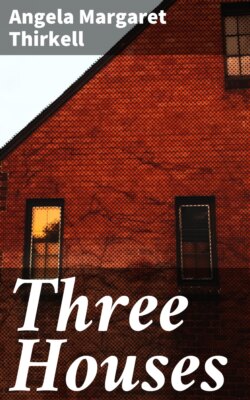Читать книгу Three Houses - Angela Margaret Thirkell - Страница 3
На сайте Литреса книга снята с продажи.
Introduction
RICHARDSON’S GROTTO
ОглавлениеTable of Contents
In the summer of 1751 Samuel Richardson invited a party of friends to his country house at North End to hear a reading of the manuscript of Sir Charles Grandison in the grotto. His guests were Mr. Mulso, Mr. Edward Mulso, Mr. Highmore, Miss Mulso afterwards Mrs. Chapone, Miss Prescott afterwards Mrs. Mulso, Mr. Duncombe a clergyman, and Miss Highmore, who afterwards married Mr. Duncombe. Mr. Highmore had been engaged on a portrait of Mr. Richardson, and Miss Highmore who was also something of an artist made a drawing of the company seated in the grotto. It is a bare plastered room with a stone floor, a few steps below the level of the garden, looking out on to a pleasant vista of gravel path and waving poplars. Mr. Richardson in a brown turban and wrapper is seated with his legs crossed (an attitude which the young artist found it a little difficult to reproduce in a convincing way), reading aloud. The gentlemen are sitting in various elegant and unstudied attitudes, a hand thrust into the waistcoat or waving approval. The ladies in black gowns and white kerchiefs, with black shady hats over their white caps, cluster round a table on the right. Miss Highmore herself is occupied with what looks like a book and a pencil, as if in the act of transferring Mr. Richardson’s venerated features to paper.
Miss Highmore, writing later to Miss Mulso, said, ‘I should think that you did my rude sketch too much honour by preserving it and taking it with you, were it not for the respectable persons attempted to be represented,’ Luckily the future Mrs. Chapone valued the rude sketch, and when in 1804 Mrs. Anna Laetitia Barbauld made her selections from Richardson’s correspondence in six volumes, Richard Phillips, the publisher, had it reproduced in colour as a frontispiece to the second volume.
North End Lane was far out of London then, the best part of a mile beyond the gates of Holland House and well on the road to Richmond and Twickenham, but the female admirers and their swains came undauntedly in their heavy coaches to taste the delights of tea-drinking and literary conversation with the kindly old man, so susceptible to their flattery. Johnson, we know, wrote of him as ‘an author who has enlarged the knowledge of human nature and taught the passions to move at the command of virtue’; but it is difficult now to think of Richardson in these terms and we see him rather as Henry Esmond Warrington saw him at Tunbridge Wells, ‘the immortal, little, kind, honest man with the round paunch’, a bevy of admiring ladies surrounding him.
Richardson died in 1761 and his world departed. But the house with the grotto remained, the mulberry tree in the garden grew and spread, and more than a hundred years after his death a poet and a painter, walking on a Sunday afternoon by fields and lanes from Kensington, saw it and were strongly attracted by it as it stood tenantless. The poet was William Allingham, now better known through the black-and-white illustration that Rossetti made for his poem, ‘The Maids of Elfenmere’. The painter was Edward Burne-Jones. My grandfather was then looking for a house where he could live and paint, and The Grange, in spite of early nineteenth-century alterations and a layer of stucco over the old redbrick front, was full of charm and possessed one large room on the first floor which could be made into a studio. So in 1867 he and my grandmother went to live there and for thirty years the house was filled with hopes, work, love, and the constant intercourse of many friends.
The original twin houses were built by Justice Smith in 1713-14. About 1836 they came to be known as The Grange, the name which the north house has kept. Richardson took the north house on lease in 1739 and Pamela, Clarissa Harlowe, and Sir Charles Grandison were all written there. The Grange passed through various hands and in 1863 the houses were inhabited by the fourth Marquis of Londonderry who threw them into one, making several structural alterations. In 1867 when my grandparents went to live there the two houses were again separated, but the north house had lost some of its original character and its handsome square staircase had been replaced by a long flight of stairs opposite the front door against the party wall. It is not known exactly when the front was stuccoed over but it was probably in the early years of the nineteenth century. At the same time the dignified sash windows at the front of the house were reduced in number and clumsily altered. The south house is still in its original state and is by far the more handsome as it is the larger of the two. North End Lane was a shabby enough thoroughfare at its northern end, but as one walked down it the little houses and shops soon came to an end and there were prosperous, comely, redbrick houses of Queen Anne’s time, each standing in its own garden with fields behind. To-day these fields and gardens are covered with mean houses or ugly pretentious flats and genteelism has re-named the district West Kensington, but the words, ‘The Grange, North End Lane, Fulham’, take me back to the eighteen-nineties and summers of miraculous length and warmth when it was always Sunday and one played for endless hours in a sunny garden.
